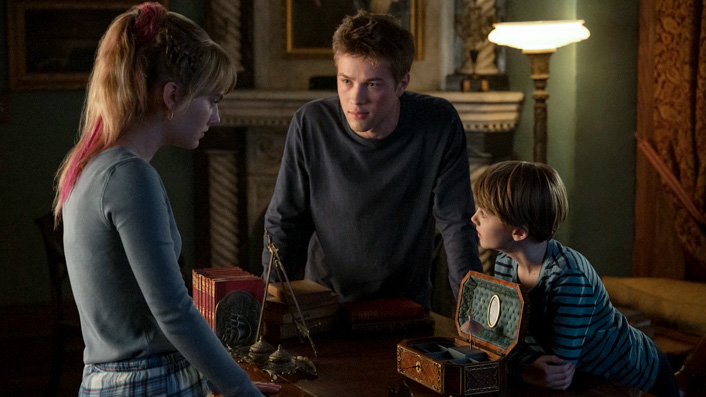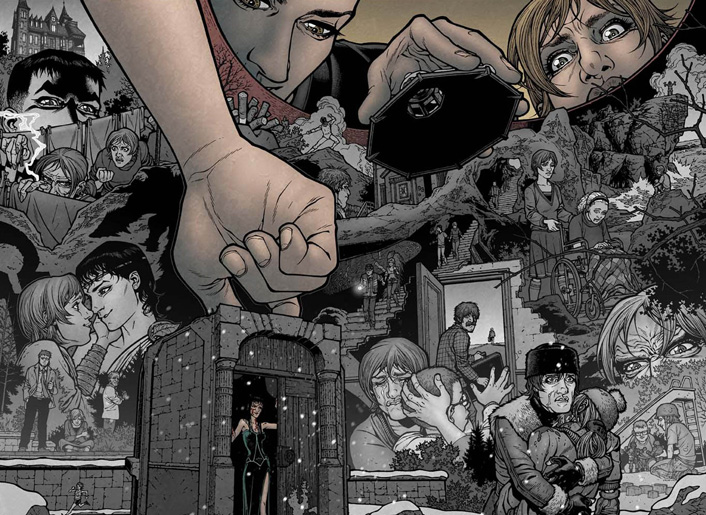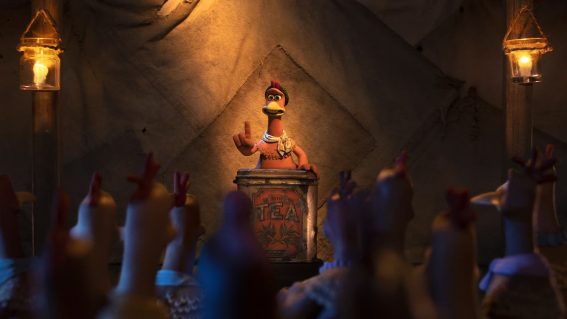Why people have waited a decade for Netflix’s Locke & Key

All episodes of Netflix’s latest series Locke & Key arrive 7 February—and it carries a load of anticipation from fans of the source material. Liam Maguren explains the love for the comic and why it’s taken a decade for a show to get made.
I admire the people who edited the official trailer to Netflix’s latest series Locke & Key. They did a bang-up job compiling alluring imagery with a compelling, whimsical score that made people believe they’re in for a new Narnia. I just wish I could see their faces when things get seriously messed-up and mind-twisty.
Based on the beloved comics by writer Joe Hill (son of Stephen King and bestselling author in his own right) and illustrator Gabriel Rodriguez, the darkly supernatural story contains deliciously delirious imagery too complex to detail and a heap of whack-a-doodle ideas too difficult to summarise.
I’ll give it a shot, though. Picture a haunted house loaded with keys that hide X-Men mutant powers within its locks. Add a family of four reeling from the loss of a beloved husband and father, mix in some high-school angst, drop a fat lump of paranormal horror, and you’ve got Locke & Key.
Heavy themes surrounding trauma and regret keep the story centred as magical elements are introduced one by one. The Anywhere Key turns doors into Monsters, Inc-like portals; the Ghost Key separates the body from soul; the Head Key opens the brain and its content like a suitcase… there are literally dozens of these things and they serve to creatively explore the ways these kids confront their grim past—and their troubled selves.
There’s an entire keychain of trippy concepts for the show to visualise. That’s probably why a screen version’s been grilling in development hell for years.
20th Century Fox bailed on a pilot way back in 2011 and a movie adaptation died an even quicker death. Some years later, Hulu stepped up and ordered a pilot directed by Scott Derrickson, who proved his ability to handle dizzying concepts with Marvel’s Doctor Strange. But a scheduling conflict shifted the pilot into the hands of Andy Muschietti, a director who knew a thing or two about traumatised teens with 2017’s It. Unfortunately, Hulu didn’t keep it afloat either.
Muschietti stayed on as a producer, and with Netflix on its side, the series finally managed to get the key to fit—and they’ve unlocked a very different kind of beast. A kinder beast, perhaps, as this Locke & Key avoids the comics’ nastier moments.
That softening might bum out some diehard fans, but it means the series’ lead characters perfectly match the ages of its intended audience. Personally, I’m not going to miss all the c-bombs, eye-mutilations, and undercooked handlings of sexual violence.

Don’t think they’re trying to make the Disney+ version of Locke & Key, though. A quick glance at the team involved—which includes directors from 13 Reasons Why, Castle Rock, Riverdale, and 1997’s Cube—should reassure you that Netflix’s Locke & Key won’t dumb things down or kiss any boo-boos when things get twisted.
They waste no time proving this. The first episode opens with a dude stabbing himself in the heart with a gold key that causes him to self-combust. It’s quite the attention-grabber, to say the least, and unless my memory’s mistaken, I don’t ever recall seeing an Explosion Key in the source material. So don’t go expecting a panel-by-panel remake.
The show’s not afraid to put kids in mortal danger either, as viewers will learn in one reasonably-sized “Holy shit!” moment in episode three. And since we’re on the topic of mangled children, the show stars Jackson Robert Scott—AKA the loveable little idiot who got his arm torn off for trusting a demon sewer clown in 2017’s It. He’s a bit smarter here and just as adorable as youngest child Bode Locke.
Impressive up-and-comers Connor Jessup and Emilia Jones are rightfully cast as brooding but big-hearted brother and sister Tyler and Kinsey Locke. For Tyler, his post-traumatic state constantly disrupts his good nature, and the dude-bro jocks who reckon “chicks dig trauma” aren’t helping. Anxious overthinker Kinsey’s got it just as bad, befriended by horror-loving film nerds unaware of the term ‘trigger warning’.
In the comic, there was a spirited sense of compassion for the traumatised that—thankfully—translates effortlessly in the show. With any luck, the teen audience this Locke & Key aims to capture will learn how to avoid being ignorant jackasses around their mentally wounded peers.
The magical mind-twisting stuff proves just as compelling with the series finding a drastically different way to illustrate someone’s headspace. Wise move, as no TV show beneath a Game of Thrones budget could imitate what Rodriguez was able to conjure up in panel form.

Locke & Key panel demonstrating the Head Key
When Kinsey uses the Head Key on herself, the show translates her headspace into an impossibly organised MC Escher shopping mall. It appears vibrant and colourful at first glance, but in this world, entering a head plagued by monsters means encountering actual monsters—and they can actually claw your face off.
It’s an effective way to illustrate how, even in the most well-constructed minds, PTSD and anxiety may not immediately reveal themselves. Netflix’s Locke & Key treats these complex problems with careful consideration while also making them compelling subjects for one heady puzzle box of a show.
Irresistible hooks dangle at the end of each episode. What other keys are hiding around? How will they use them in their everyday life? And what consequences lie waiting for the person who, let’s say, removes a part of themselves from their headspace? Even fans who have been waiting a decade for this series aren’t going to know the answers to those questions.
All episodes of Locke & Key stream on Netflix 7 February










